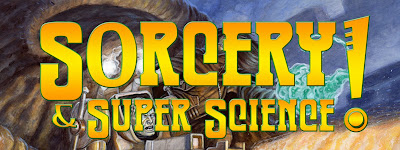Vehicles in Combat
Vehicles can generally be treated just like characters in combat situations. Attackers target either the vehicle or its passengers; hitting a passenger requires at least a major success and you cannot target a passenger completely concealed within a vehicle. Use the lower of the vehicle’s Handling or its pilot’s Coordination of the vehicle’s pilot for its defensive reactions. Passengers gain the benefit of the vehicle’s armor while inside provided it’s reasonable to assume the attack would be lessened by the vehicle’s presence. A vehicle can be used for a charging attack. Treat this as the vehicle crashing into the target, using the target’s Damage Resistance as Material level—this can result in some vehicles being destroyed by crashing into very tough targets!
Vehicles react differently to Slams, Stuns, Kills and to the effects of bleeding weapons and draining weapons. A vehicle cannot be slammed, stunned, or killed unless it currently has a Structure of less than 8. However, a successful Called Shot can slam, stun, or kill a vehicle regardless its Structure (
Aim for the tires, Boo, aim for the tires!).
Slamming Vehicles: If an attack achieves a potential slam outcome and inflicts 0 or more Structure damage to the vehicle, after resistance, test the full damage level against the vehicle’s Structure. Attacks inflicting less than 0 damage cannot slam a vehicle.
• Marginal Success reduces the vehicle’s Handling by 1 for the next round.
• Moderate Success knocks the vehicle off course. The driver must spend their move the next round correcting this unwanted change or crash if there is anything nearby to crash into. The vehicle’s Handling is reduced by 1 for the next round.
• Major or Massive Success sends the vehicle off course. The vehicle’s Handling is reduced by 1 for the next round. The driver must spend the next turn correcting this unwanted change with a successful Handling Test equal to the full damage level of the Slam. If this test fails, the driver crashes into something if there’s anything nearby to crash into.
Stunning Vehicles: If an attack achieves a potential stun outcome and inflicts 0 or more Structure damage to the vehicle, after resistance, test the full damage level against the vehicle’s Structure. Attacks inflicting less than 0 damage cannot stun a vehicle.
• Marginal Success reduces the vehicle’s Handling by 1 for the next round.
• Moderate Success knocks the vehicle off course. The vehicle’s Handling is reduced by 1 for the next round. The driver must spend their move the next round correcting this unwanted change or crashes if there is anything nearby to crash into.
• Major or Massive Success reduces the target’s Structure to 0 and renders the vehicle nonfunctional.
Killing Vehicles: If an attack achieves a potential kill outcome and inflicts 0 or more Structure damage to the vehicle, after resistance, test the full damage level against the vehicle’s Structure. Attacks inflicting less than 0 Structure damage cannot kill a vehicle.
• Marginal Success reduces the vehicle’s Handling by 1 for the next round.
• Moderate Success forces the driver to succeed on a Handling Test equal to the full damage level of the Kill. The vehicle’s Handling is reduced by 1 for the next round. If this test fails, the driver crashes into something if there’s anything nearby to crash into.
• Major or Massive Success reduces the target’s Structure to 0 and renders the vehicle nonfunctional.
Bleeding Weapons: Bleeding weapons reduce a vehicle’s Speed by 1 in addition to their normal damage. A vehicle’s Speed can be reduced by 2 Levels maximum in this manner.
Draining Weapons: Draining weapons drain 1 Armor Level in addition to their normal damage. A vehicle’s Armor can be reduced by 4 Levels maximum in this manner.

















